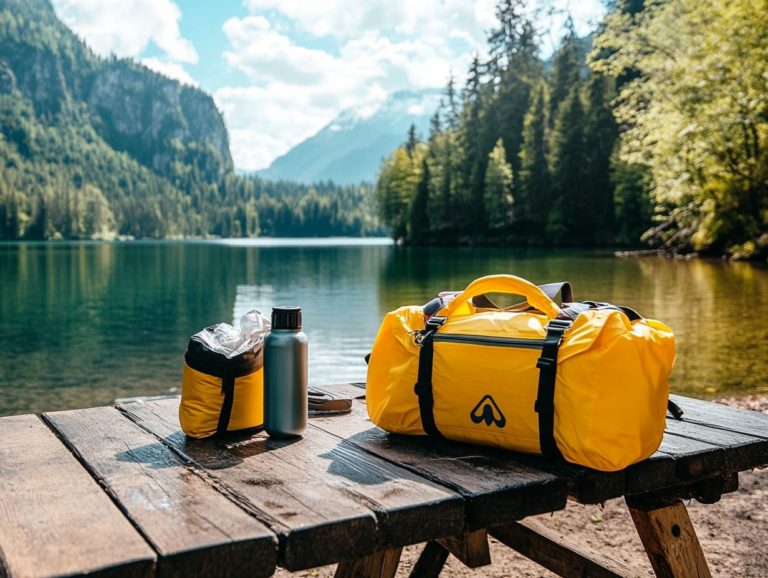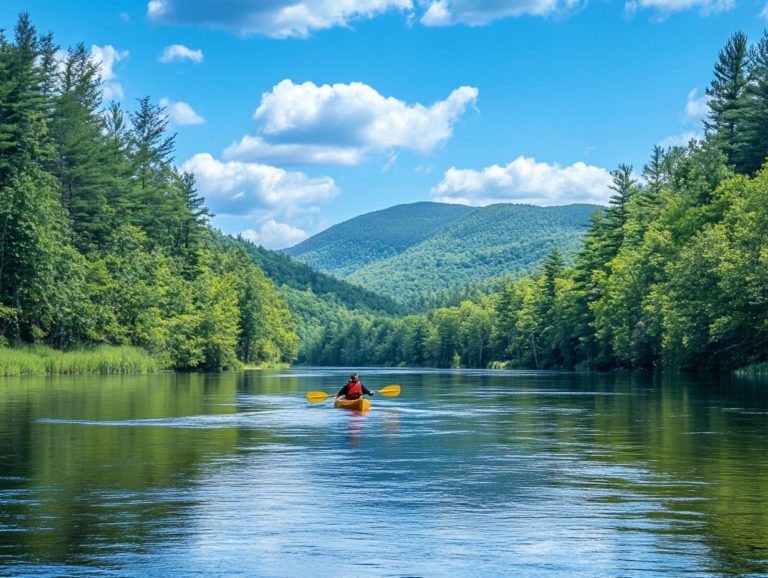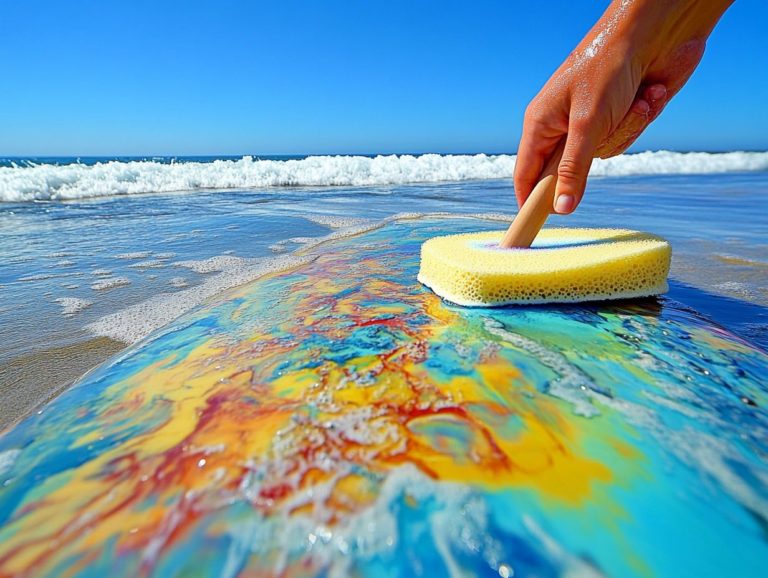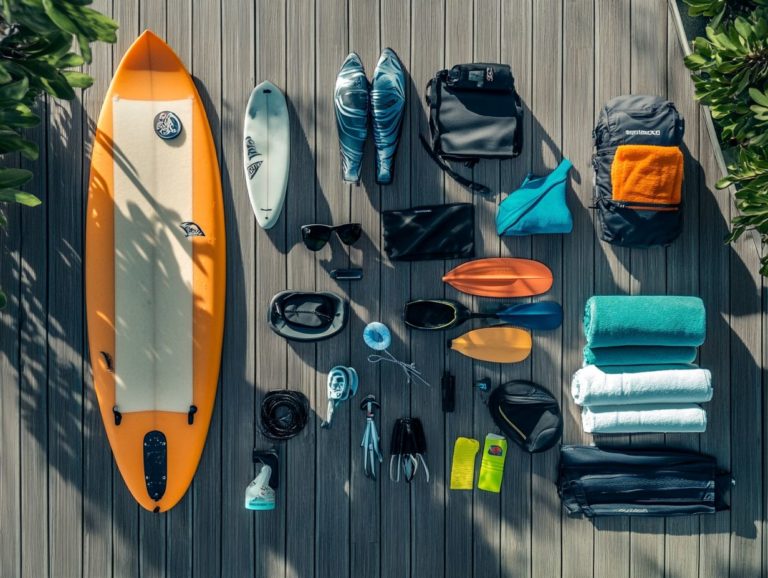How to Choose the Right Life Jacket
When it comes to water safety, wearing a life jacket is one of the simplest yet most effective measures. Drowning statistics are rising, making it essential to understand the importance of life jackets.
This article explores the various types of life jackets. It will guide you on how to select the right one based on fit and comfort.
Key safety guidelines will enhance your protection during water activities. Stay safe while enjoying your time in the water.
Dive in to discover everything you need to know about water safety!
Contents
- Key Takeaways:
- Importance of Wearing a Life Jacket
- Types of Life Jackets
- Factors to Consider When Choosing a Life Jacket
- Proper Maintenance and Care for Life Jackets
- Safety Tips for Wearing a Life Jacket
- Frequently Asked Questions
- What factors should I consider when choosing a life jacket?
- What is the difference between Type I, II, III, and IV life jackets?
- How do I determine the correct size for a life jacket?
- Are there specific life jackets for different water activities?
- Can children wear adult life jackets?
- How often should I replace my life jacket?
Key Takeaways:
- Always wear a life jacket during water activities to reduce drowning risk. Remember, 90% of drownings happen without one.
- Choose a life jacket based on type, fit, and buoyancy. Different styles suit various water activities and body types.
- Keep your life jacket in top shape! Follow cleaning and storage instructions from the manufacturer.
Importance of Wearing a Life Jacket
Wearing a life jacket is essential for your safety during any water activities, as it dramatically lowers the risk of drowning an unfortunate leading cause of accidental death in places like California, New York, and Florida.
Life jackets, particularly those approved by the USCG, offer critical buoyancy and support, allowing you to remain afloat in emergency situations. Whether you re boating, swimming, or partaking in other water sports, using a life jacket correctly can be a lifesaver. Understanding their importance is vital to ensuring your safety on the water.
Statistics on Drowning and Life Jacket Use
Statistics reveal that a striking percentage of drowning victims were not wearing life jackets at the time of their incidents, emphasizing the vital role life jackets play in enhancing boating safety.
According to the U.S. Coast Guard, around 86% of individuals who drown in recreational boating accidents are not donned in life jackets. This alarming statistic highlights just how crucial life jackets are in preventing tragedies. In fact, studies indicate that wearing a life jacket can increase your chances of survival by nearly fivefold.
Regulations mandated by the Coast Guard require that all vessels have sufficient life jackets onboard, which is essential for activities like kayaking, paddleboarding, and fishing.
By following these regulations and choosing to wear life jackets, including inflatable life jackets or throwable devices, you can significantly lower the risk of drowning and ensure a much safer experience on the water.
Types of Life Jackets
Understanding the different types of life jackets is key to finding the right one for you. Each type has special features designed for various water activities.
For instance, Type I jackets are perfect for offshore use, offering the highest level of buoyancy, while Type II and Type III jackets cater to calm waters and recreational activities, respectively. If you’re into water sports, inflatable life jackets provide added comfort, emphasizing the importance of choosing the right type based on your activity and safety requirements.
Overview of Different Styles and Features
Life jackets come in various styles and features designed to enhance your comfort and freedom of movement while keeping you buoyant in the water.
The most common designs include vest-style jackets and suspenders. Each is tailored to meet your specific needs during different water activities. Vest-style jackets typically have a classic design that wraps snugly around your torso, offering excellent flotation and stability perfect for many water sports.
Suspenders, on the other hand, take a more minimalist approach. They grant you greater mobility, which is especially beneficial for activities like kayaking or paddleboarding on personal watercraft. These design differences greatly affect usability; while vest-style jackets may feel bulkier and provide robust support, suspenders tend to feel lighter and less restrictive.
Understanding the unique features and benefits of each style is crucial for ensuring your safety and enjoyment on the water.
Factors to Consider When Choosing a Life Jacket
Selecting the right life jacket requires careful consideration of factors like fit, comfort, buoyancy, and the specific needs for different age groups think child life jackets for little ones.
A properly fitted life jacket not only ensures your safety but also allows for freedom of movement, which is essential during water activities.
By understanding the unique characteristics of each type of life jacket, you can make an informed choice that aligns perfectly with your needs. This ultimately elevates both safety and enjoyment during your boating and swimming adventures.
Fit, Comfort, and Buoyancy
Achieving the proper fit, comfort, and buoyancy in a life jacket is vital for your safety and enjoyment during any water activities.
A poorly fitted life jacket turns an exciting day on the water into a potentially dangerous situation. If the jacket is too loose, it could ride up over your head in a fall, rendering it useless when you need it most. Conversely, a life jacket that’s too tight can restrict your movement and breathing definitely not ideal when you’re kayaking or swimming in choppy waters.
When selecting a life jacket, consider the water conditions you ll be in, whether it s the calmness of a lake or the unpredictability of the ocean. Buoyancy is key to maintaining safety across these varying environments, so make your choice wisely.
Proper Maintenance and Care for Life Jackets
Proper maintenance and care of your life jackets are crucial for ensuring their longevity and effectiveness during water activities. This involves regular cleaning and appropriate storage practices to keep them in optimal condition.
By taking these steps, you can ensure that your life jackets remain reliable and ready for any adventure on the water, whether for infants, youth, or adults.
Instructions for Cleaning and Storage
Cleaning and storing life jackets properly is essential for prolonging their lifespan and ensuring they remain effective as flotation devices.
By following specific cleaning instructions tailored to the different materials used in life jackets, you can maintain their condition. For instance, neoprene jackets require gentle hand washing with a mild detergent, while nylon options often withstand machine washing on a gentle cycle. After cleaning, be sure to air dry these jackets away from direct sunlight, as excessive heat can damage their materials.
Store your jackets in a cool, dry place to prevent mold and mildew. Using moisture-absorbing packets offers extra protection. Regular maintenance checks for fraying or damage are crucial to ensure both safety and optimal performance.
Safety Tips for Wearing a Life Jacket
Knowing essential safety tips for wearing a life jacket can greatly enhance your safety while boating and engaging in water sports. This knowledge means you’re ready for anything, allowing you to enjoy your time on the water with confidence.
Guidelines for Proper Use and Precautions
Adhering to guidelines for the proper use of life jackets can significantly reduce risks and elevate your personal safety while enjoying boating and other water sports!
It’s essential for you and everyone on board to understand the importance of selecting the right type of life jacket based on age, weight, and the specific activity at hand. Ensure these flotation devices comply with U.S. Coast Guard (USCG) regulations and safety standards. For more details, check what to look for in a water sports life jacket. Regularly inspect life jackets for wear and tear. Make sure they fit properly, and educate yourself about their use to enhance your safety measures!
Compliance with these precautionary steps is crucial in preventing accidents. So, prioritize this vital aspect of water safety and boating safety!
Frequently Asked Questions
What factors should I consider when choosing a life jacket?
When choosing a life jacket, consider the fit, buoyancy (the ability to keep you afloat), visibility, type, and the activity you will be doing. The life jacket should fit snugly and have enough buoyancy to keep your head above water. It should also be highly visible and appropriate for the activity!
What is the difference between Type I, II, III, and IV life jackets?
There are four types of life jackets, each with different levels of buoyancy and intended use. Type I jackets provide the most buoyancy and are designed for open water use. Type II jackets are intended for calmer inland waters. Type III jackets are the most comfortable and suitable for various water activities. Type IV jackets are throwable devices and should not be used as a substitute for a wearable life jacket.
How do I determine the correct size for a life jacket?
To determine the correct size for a life jacket, measure your chest and compare it to the size chart provided by the manufacturer. Always choose a life jacket that fits snugly and does not ride up when you’re in the water!
Are there specific life jackets for different water activities?
Yes! There are life jackets specifically designed for different water activities such as boating, kayaking, and waterskiing. These jackets cater to the specific needs and movements of each activity, providing maximum comfort and safety.
Can children wear adult life jackets?
No! It is not recommended for children to wear adult-sized life jackets. Children should always wear a properly fitted, child-sized life jacket that provides the appropriate level of buoyancy for their weight. Adult life jackets may not fit properly and could cause the child to slip out in an emergency!
How often should I replace my life jacket?
Life jackets should be replaced every 5-10 years, depending on the manufacturer’s recommendations. They should also be replaced if they show signs of wear and tear, such as fading, tears, or missing straps. Regularly check your life jacket for any damage and replace it if necessary to ensure your safety!






